Germany’s got a big secret: It’s got islands. And not the rocky, desolate, and uninhabited kind, but islands with miles of sandy beaches, picturesque cliffs, peaceful, protected forests, and seaside luxury hotels. The Germans obviously are in the know, and because of their geographical locations, the Dutch and Danes are, too. But nobody else in in the world seems to remember that Germany has a coastline on both the North Sea and the Baltic Sea, let alone that this coastline is peppered with dozens of islands. The biggest of all the German islands is Rügen in the state of Mecklenburg-Western Pomerania, itself a wildly underrated area. While Rügen takes a little effort to get to, the trip is hardly insurmountable, and travelers who want to see Germany away from the big urban centers, internationally known beer festivals, and packed tourist attractions would be remiss to pass on it.
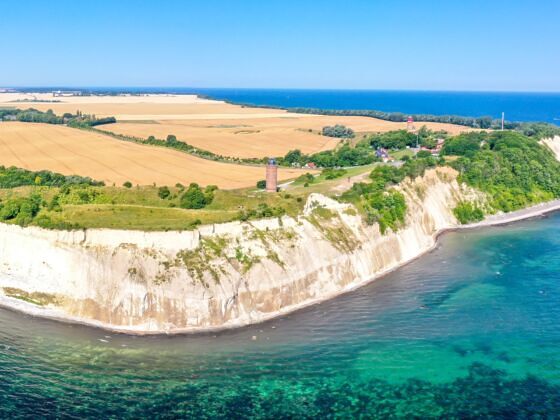

This Lesser-Known Region of Germany Is Home to a Dreamy Island on the Baltic Sea
We hope you love the spaces and stays we recommend! Just so you know, Matador may collect a small commission from the links on this page if you decide to book a stay.
Where is Rügen and how do I get there?
Rügen is an island located in the northeast of Germany in the Baltic Sea. From Hamburg, the island is a 3.5-hour car ride or a four-hour train journey. From the German capital of Berlin, it’s relatively similar: 3.25 hours in the car or 4.25 hours on the train. That said, the train journey between Berlin and Rügen is very scenic and filled with wildlife-watching opportunities, including deer, storks, rabbits, and more.
From personal experience, I would suggest to make the trip to Rügen from either Hamburg or Berlin a little more interesting by stopping along the way. Those coming from Hamburg would do well to stop in the historic seaside city of Rostock, where the North German Gothic architectural style is omnipresent. Those traveling from Berlin should break up the trip by spending a day or two in the small university town of Greifswald.
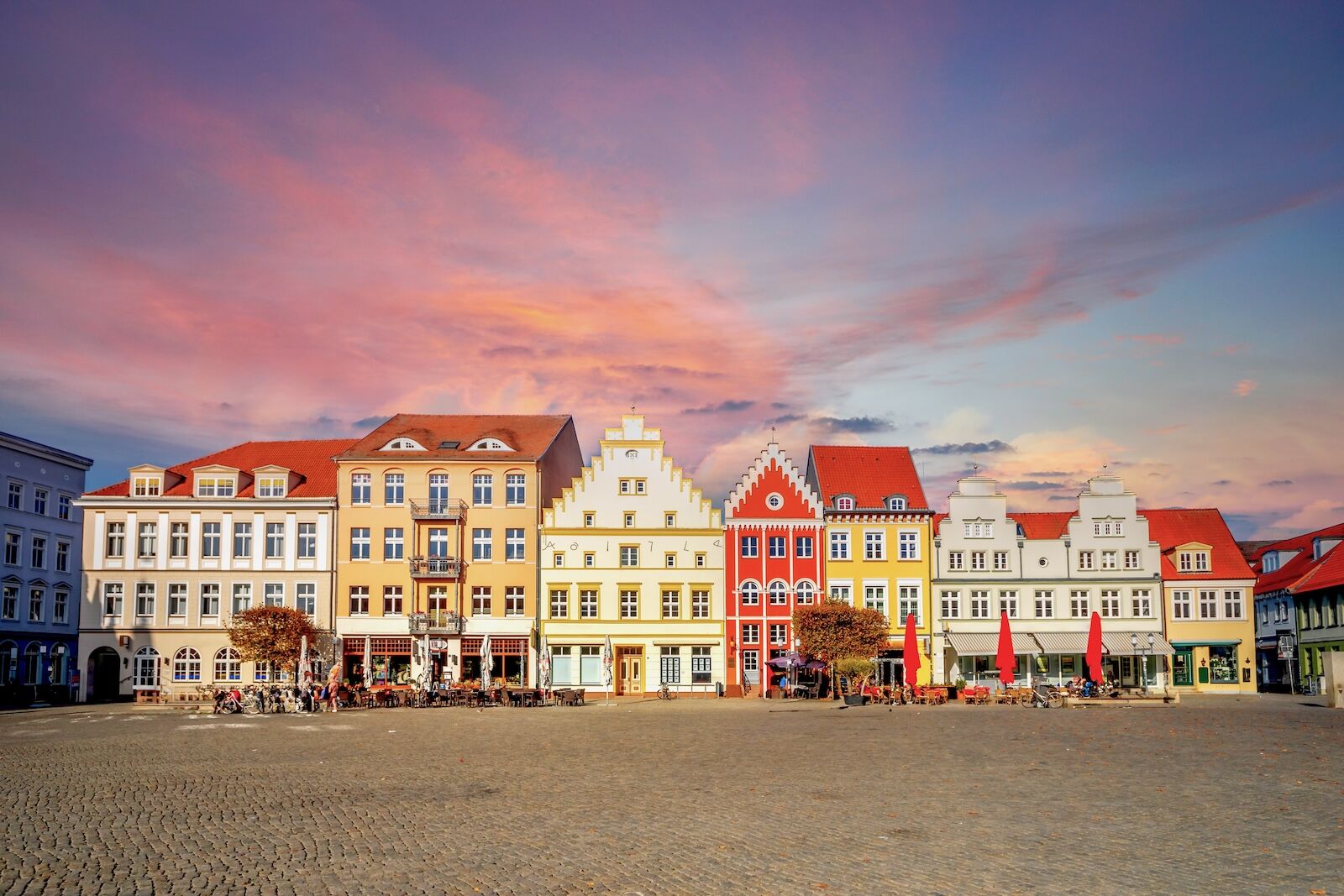
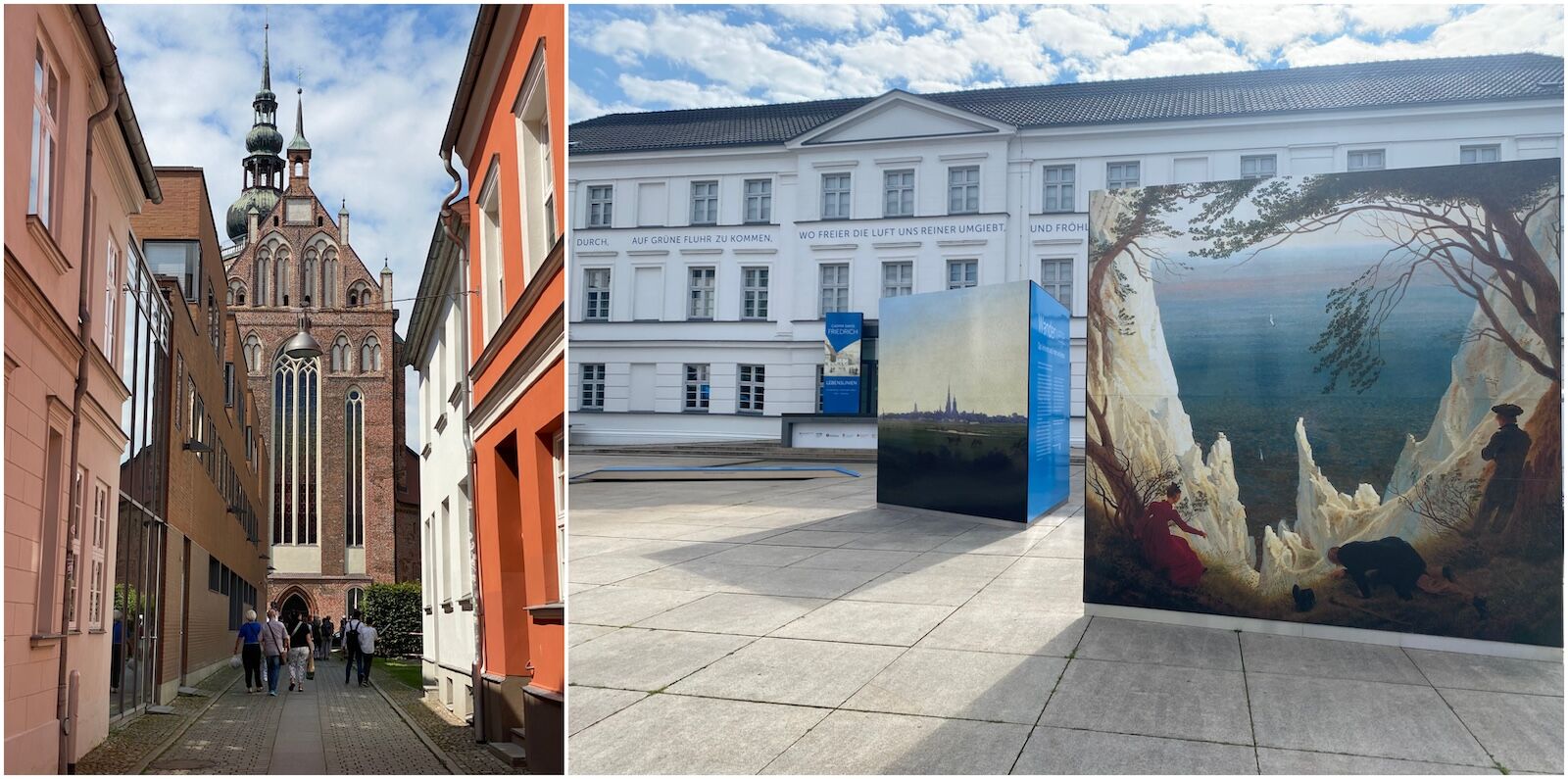
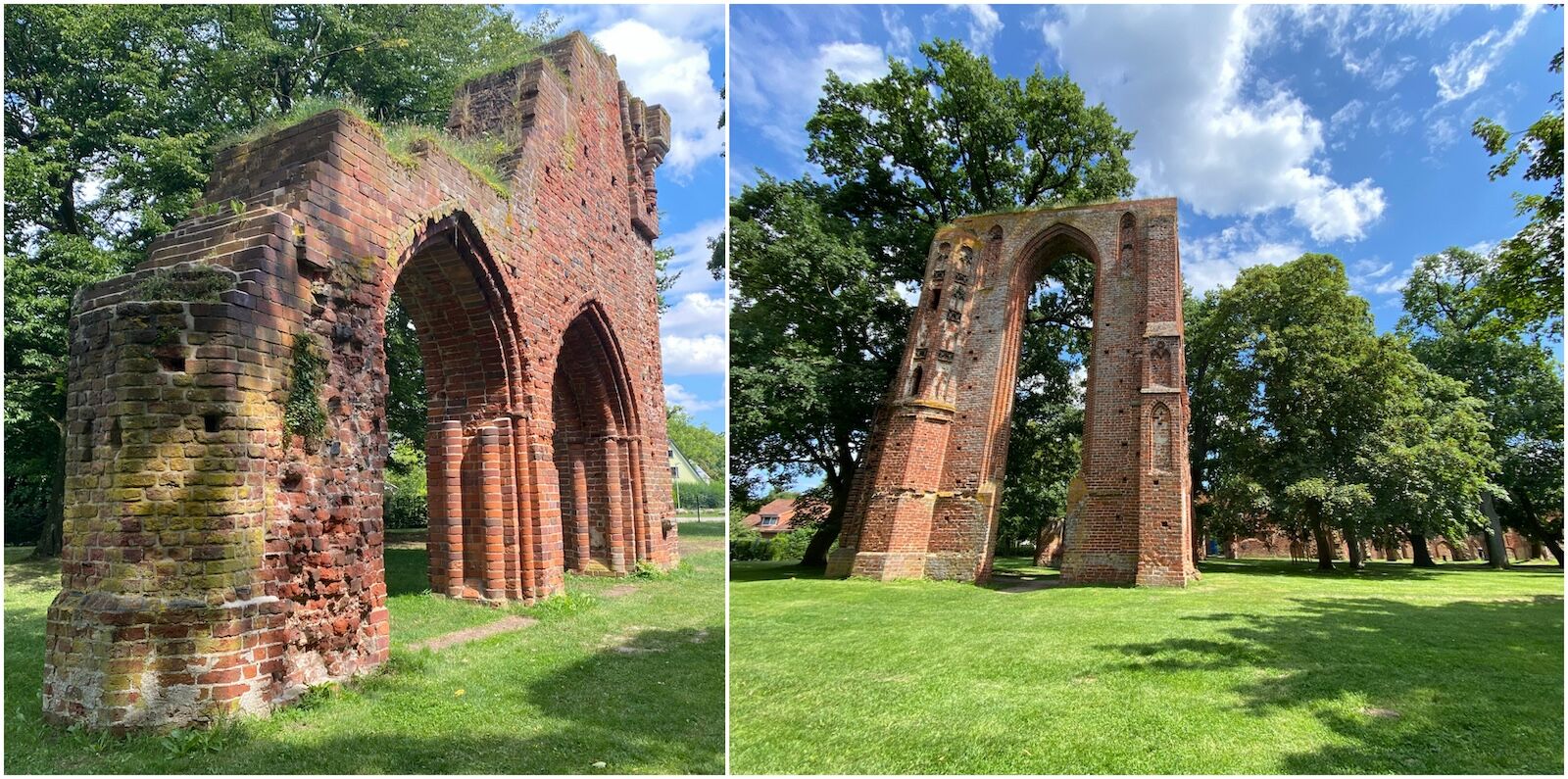
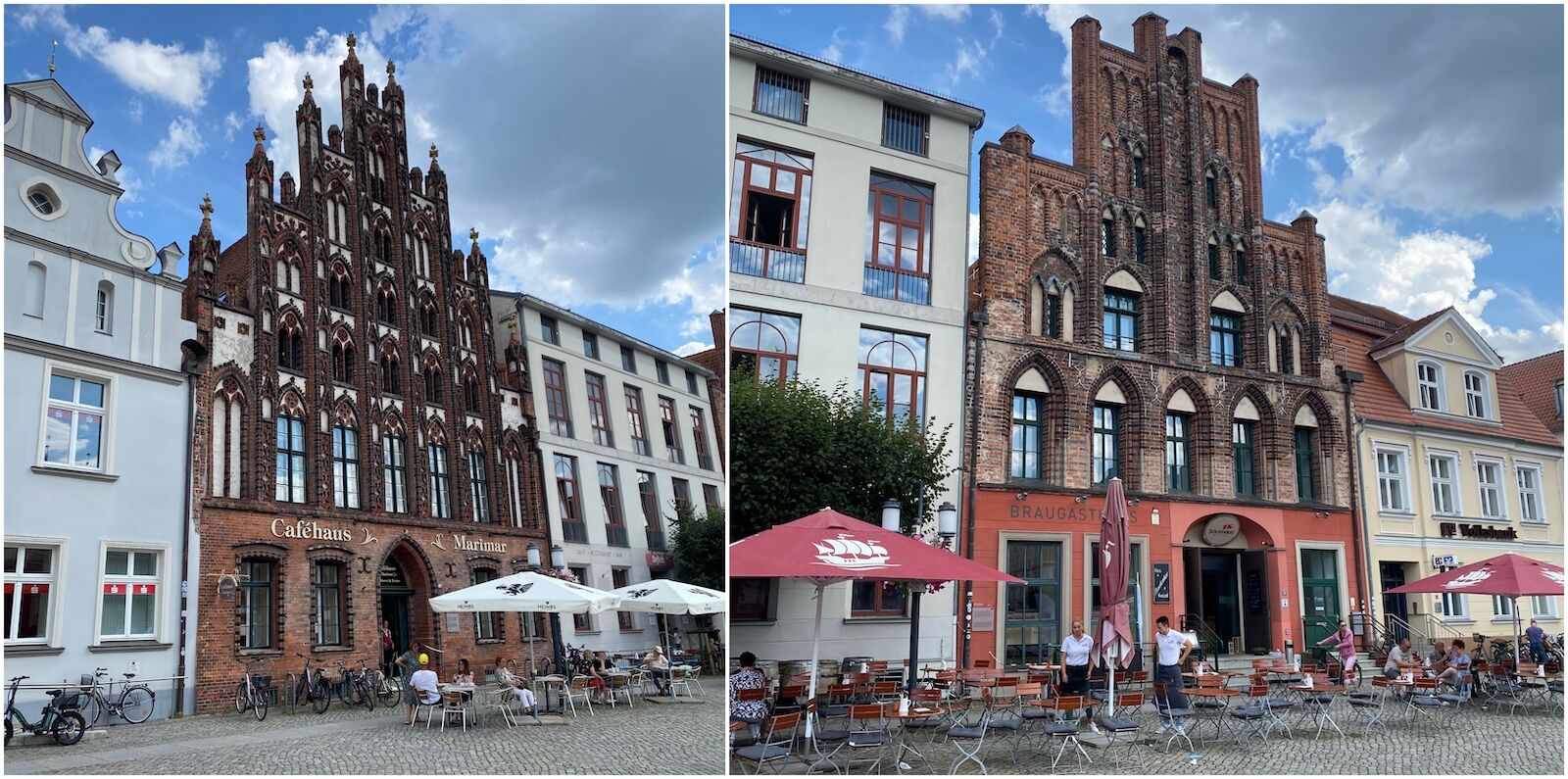
Greifswald is the place of birth of one of the most renowned German artists: Caspar David Friedrich. As such, the local Pomeranian State Museum has exhibitions dedicated to his life and work. You can also visit his childhood house, the St. Nikolai Cathedral where he was baptized, and check out the ruins of Eldena Abbey which inspired several of his paintings. The island of Rügen and its magnificent chalk cliffs were also a very significant source of inspiration for the Romantic painter, so a pitstop in Greifswald only makes sense. In 2024, Greifswald celebrates the 250th anniversary of the birth of Caspar David Friedrich with a multitude of events, making it a great time to visit. Greifswald’s colorful market square, pretty cobbled streets, and multiple churches beg to be explored and photographed, so don’t just speed through the town — there’s a lot to see. While the hotel offerings in Greifswald are limited, the Hôtel Galerie is an immaculate and central place to stay, and the Störtebeker Braugasthaus is an ideal place to try out traditional German fare (and beer, of course).
What to see and do on the island of Rügen, Germany?
Being the largest of all the German islands, Rügen offers a lot of great locations for travelers to base themselves in. The small town of Binz is the most ideal option, however. Not only is it on the seaside, but it’s located in between a lot of the island’s attractions, making it easy to reach them, whether on foot, bike, or by bus. The bus network, operated by VVR, covers the eastern and northern coasts of the island very thoroughly and efficiently, so you can rely on public transport for all your outings.
Tour the small town of Binz
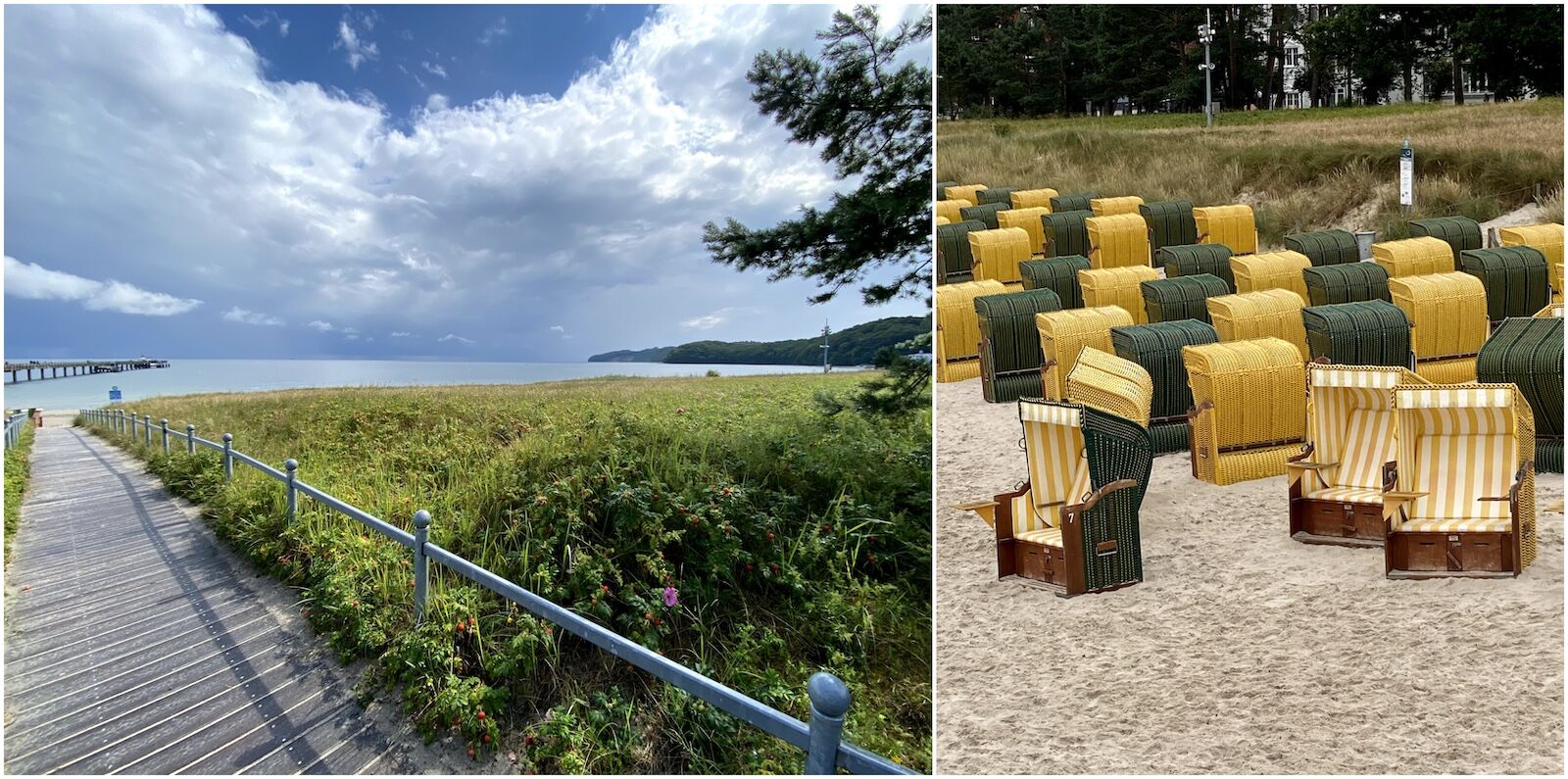
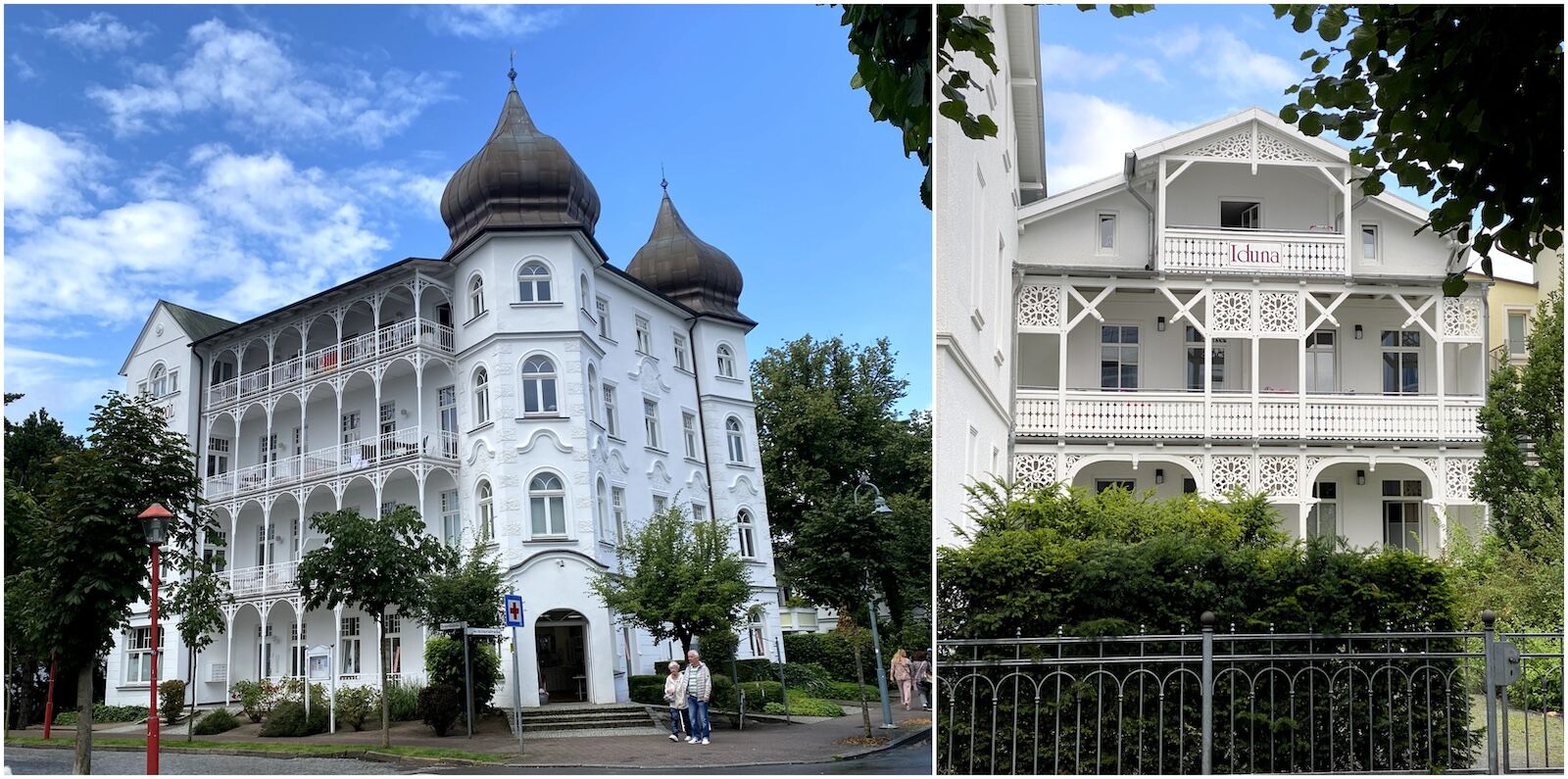
While Binz is a small town, it’s worth taking a couple of hours to explore it properly before heading out to see Rügen’s big hits. The architecture of the seaside villas is exquisite and all you need to do to enjoy it is to take a quick walk around the town. The beach promenade offers lovely views of the elegant historical homes on one side and the beach on the other. Small paths lead from the promenade to the sand where you can rent a strandkorb, a typically German piece of beach furniture, and enjoy the Baltic Sea. While all the beaches on the promenade are textile only, you can find a nudist beach a little further down the walkway, beside a wooded area.
Visit the Hitler’s seaside resort in Prora
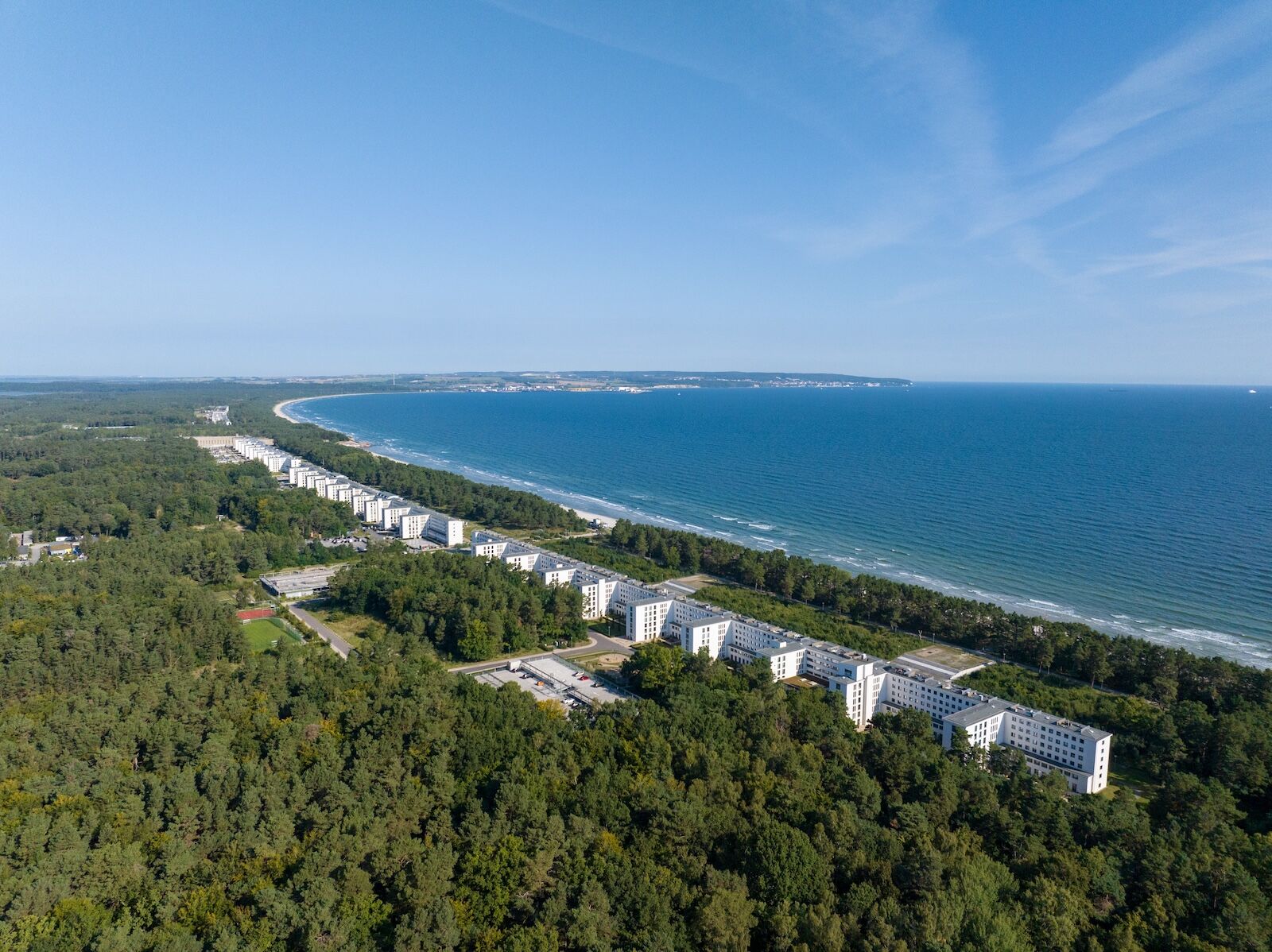

So scenic and peaceful is the island of Rügen that Hitler himself thought it would be the perfect place to build a seaside resort for working-class vacationers. The little town of Propra, just 20 minutes away from Binz by bus, was the selected location, and between 1936 and 1939, nothing less than a three-mile-long building, one of the longest in the world, was built but never completed. This immense concrete construction, a pipe dream that was meant to allure the working class to the Nazi regime’s ideology, was supposed to accommodate 20,000 people at a time and offer every one of them a room with a view of the sea. Having never been finished, in the years during and after the war, the seaside resort was used for various purposes, including a training facility for police officers and radio operators, a shelter for the people of Hamburg who lost their home during the intense Allied bombings, a military hospital, and, more recently, a Miami-themed nightclub. Nowadays, parts of the building has been converted into condos, others have been destroyed or left untouched, and a small section is dedicated to the history of this fascinating building with several exhibitions. While most of the displays are in German, you can take a tour in English if you book it in advance, which I highly recommend. (Note that it is possible to walk the three miles from Binz all the way to the Nazi seaside resort via the beach.)
Climb way above the canopy at the Treetop Walk in Prora
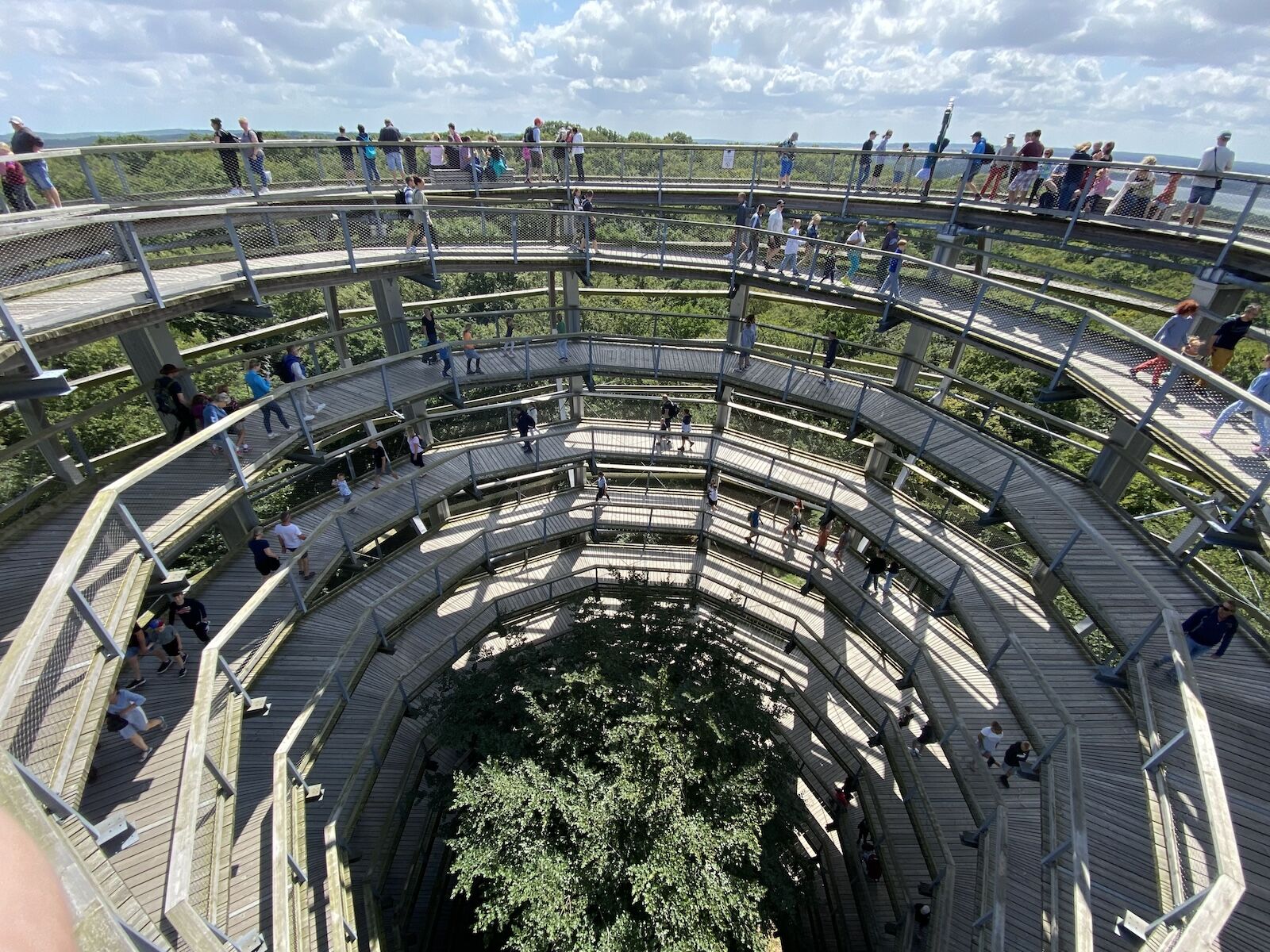
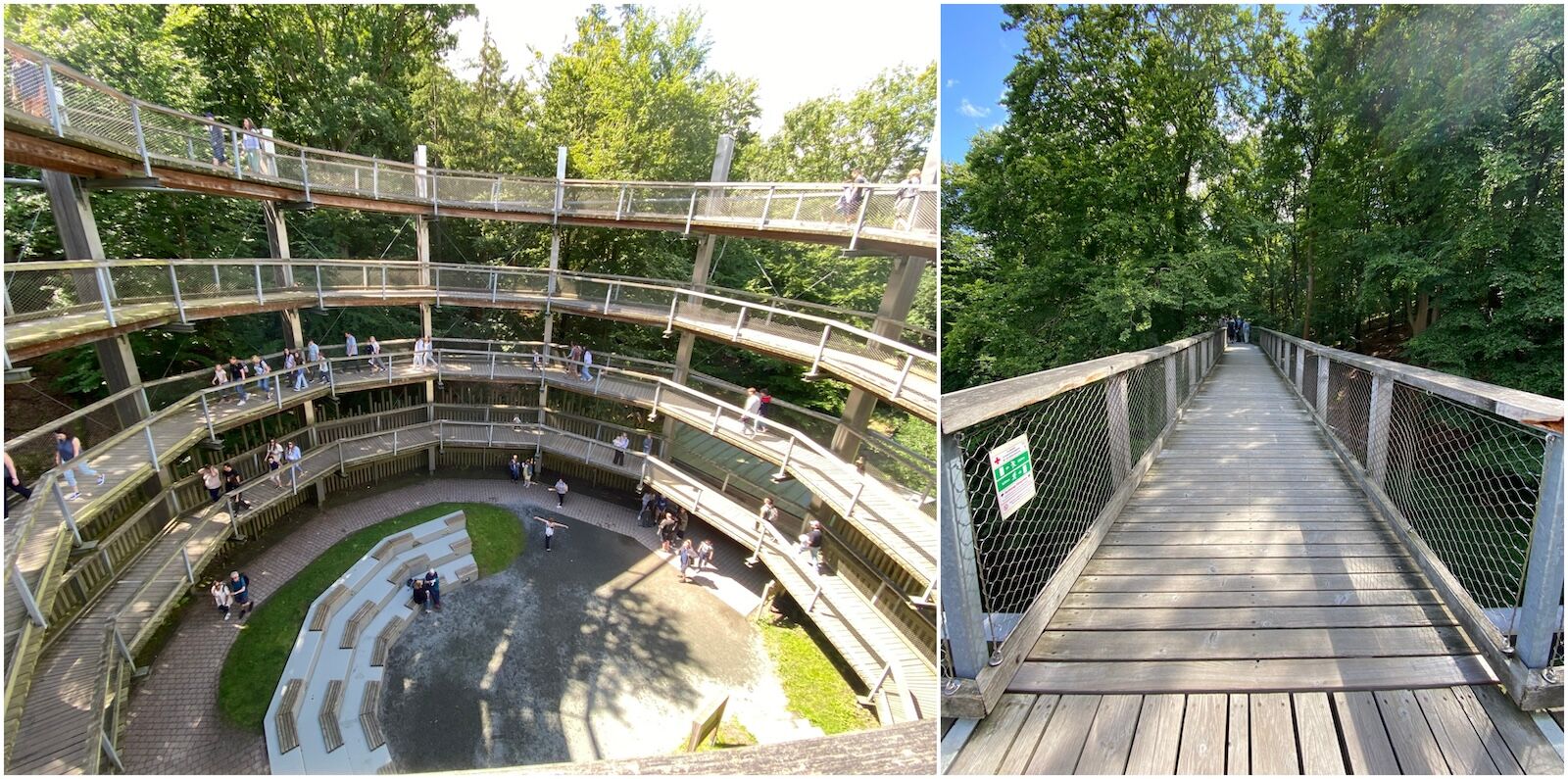
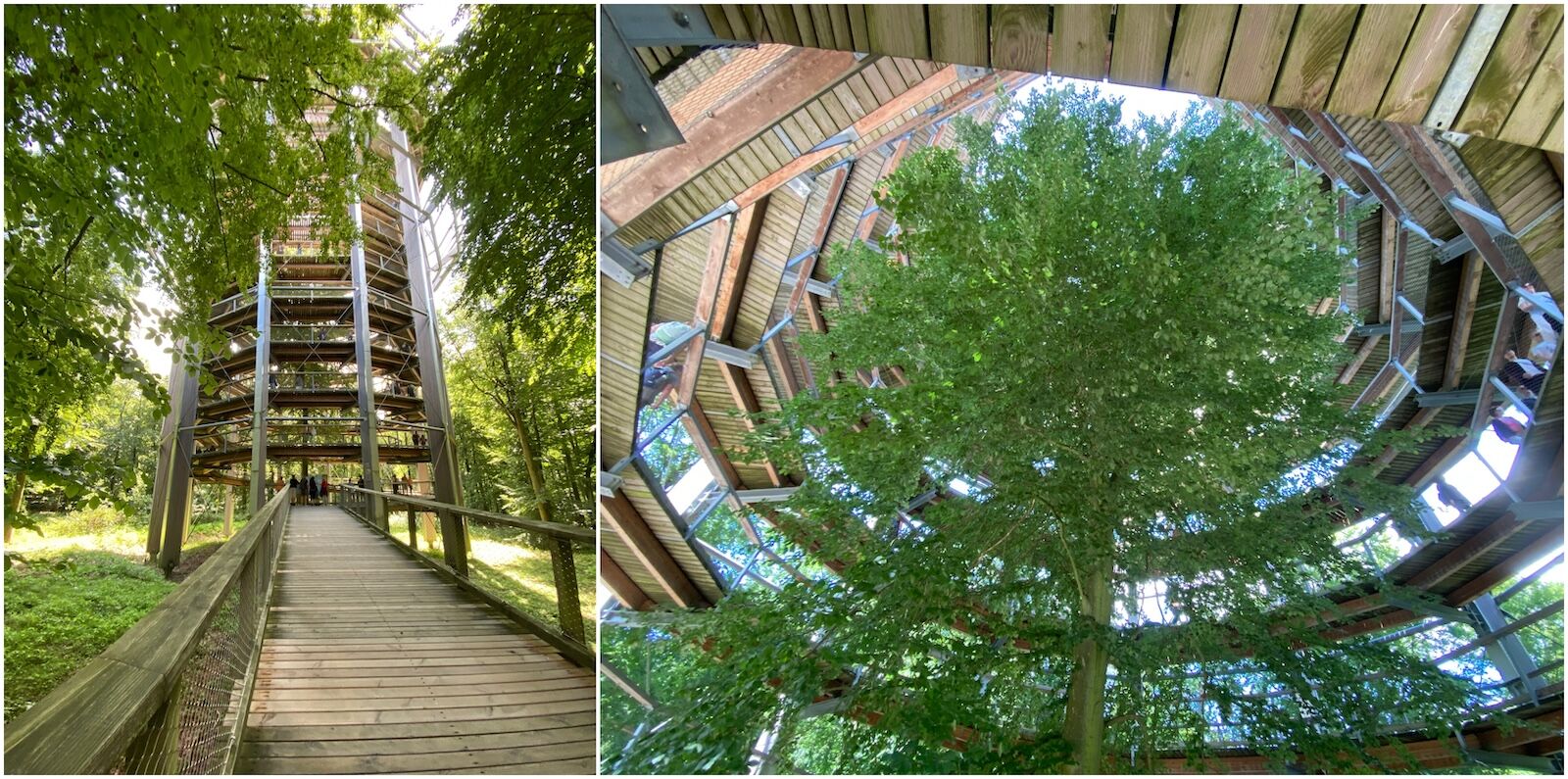
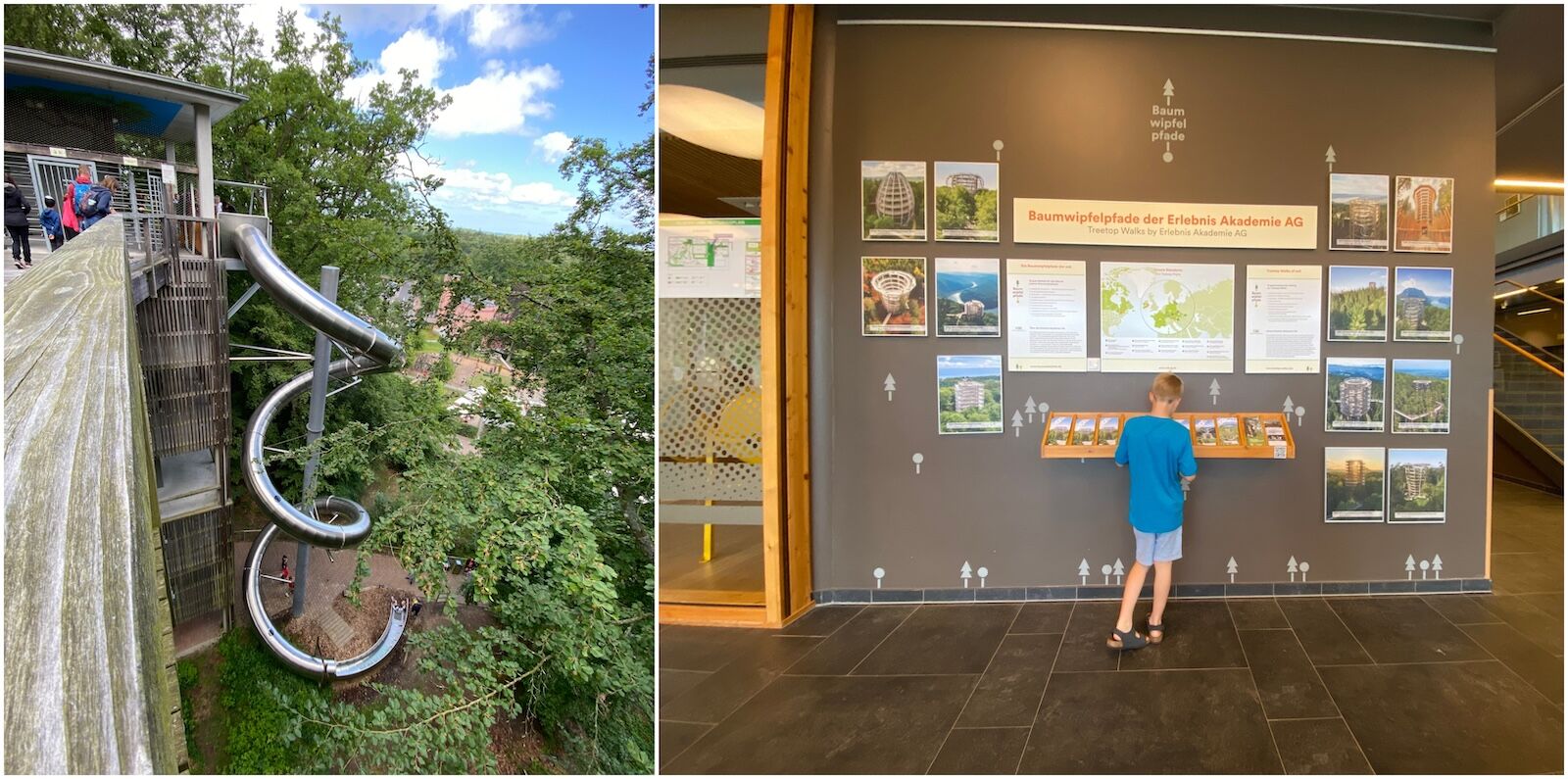
Also in Prora, and only a 30-minute walk from Hitler’s seaside resort is the Naturerbe Zentrum Rügen, a complex that include the Treetop Walk and an environmental information center about the area. The canopy walk starts with a simple spiral structure to take you up among the trees, continues as a wide elevated path in the forest, and culminates in a 131-foot-tall tower the top of which is reachable via a long and gently sloped spiral path. The walk is less than a mile long but it takes one to two hours to fully appreciate the place by reading the informative signage placed at regular intervals, and enjoy the scenery. Note that even on the warmest and sunniest day, the top of the tower is windy so bring a sweater — you’ll want to spend time up there looking at the island of Rügen from a bird’s-eye view. At the end of the adventure among the trees, you can opt to descend via a long, corkscrew slide or go down the stairs — the slide cost a little extra. Next, enjoy the displays at the environmental information center, where an augmented reality screen lets you pet some virtual forest dwellers.
Take an old-fashioned steam train to tour the island
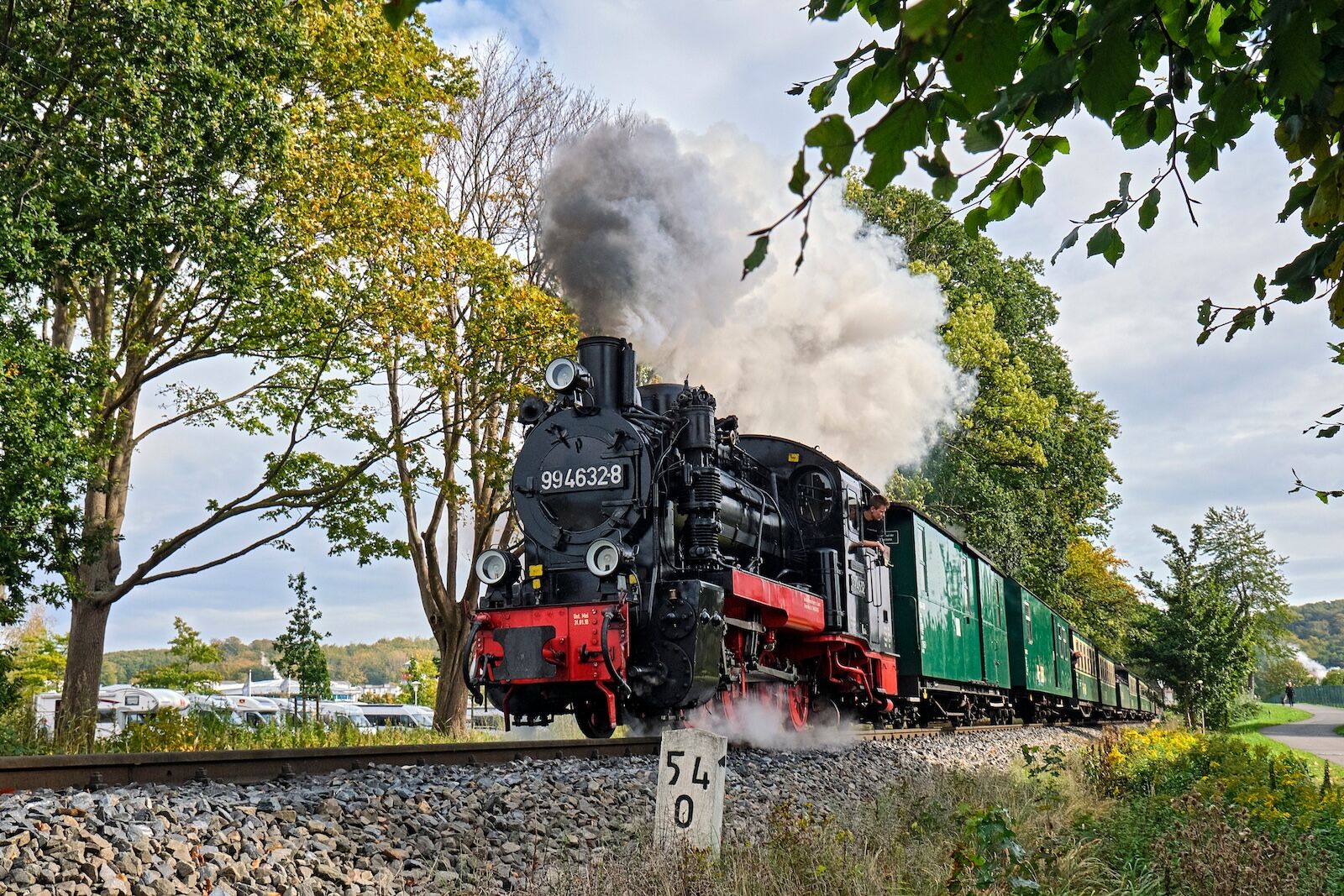
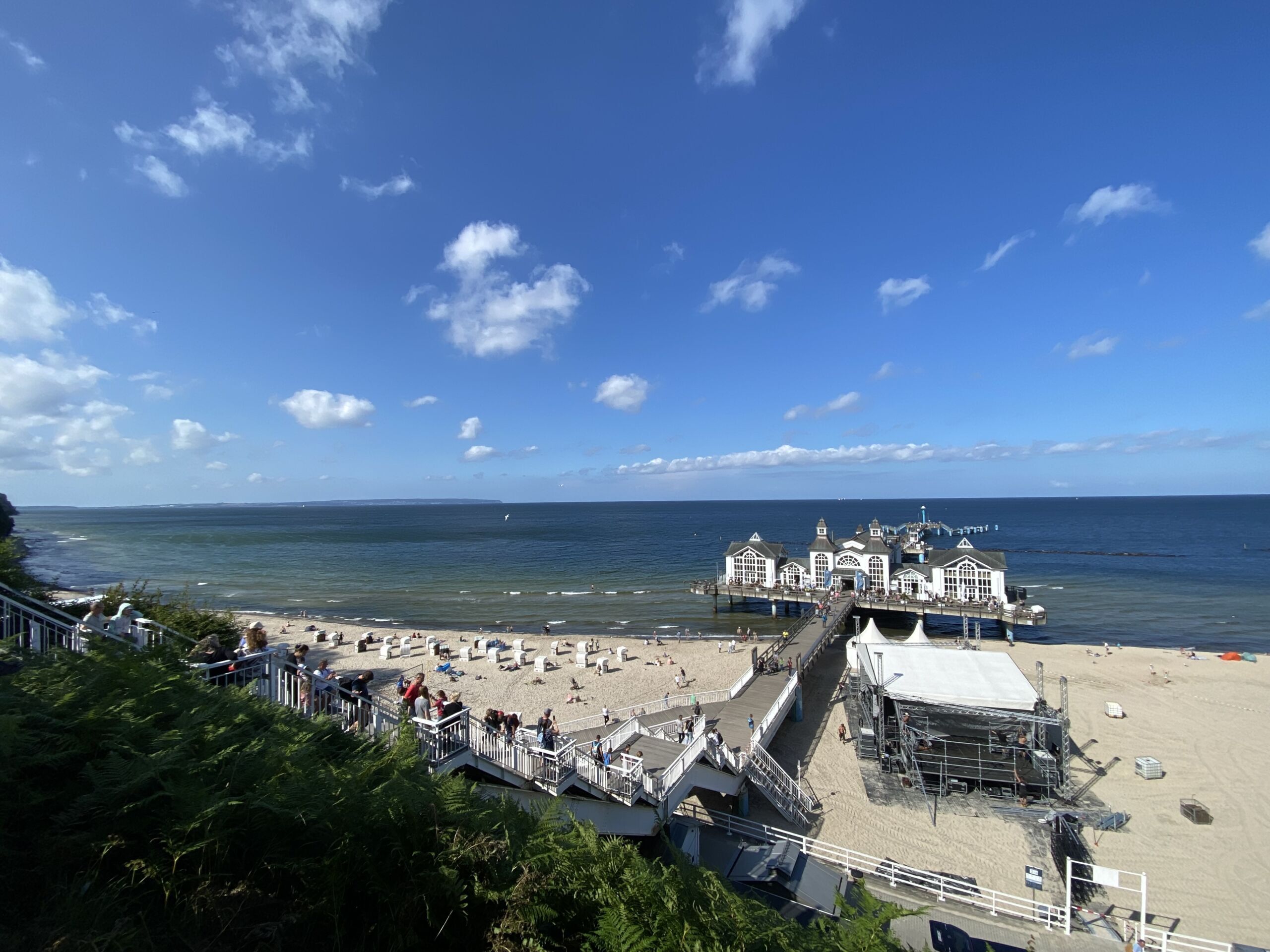
There are two train stations in Binz: Ostseebad Binz, the main train station where trains from Hamburg and Berlin arrive to and leave from, and Kleinbahnhoff, the “little train station” where you can ride a steam train around parts of the island. Departing from both the towns of Göhren and Lauterbach and stopping in the small towns along the way, the steam-powered narrow-gauge railway nicknamed Rasender Roland, in activity since 1895, is an excellent way to get around the southeastern part of the island. The seats are rustic, the ride bumpy, and you can certainly smell the steam, but if you like trains, you’re bound to have a wonderful time. From Binz, take the Rasender Roland to the town of Sellin for a quick tour of the town. The beautiful Sellin pier, the gorgeous views it provides, and the large surrounding beach are worth the 20-minute walk from the station.
Hike, learn, and be inspired at Jasmund National Park
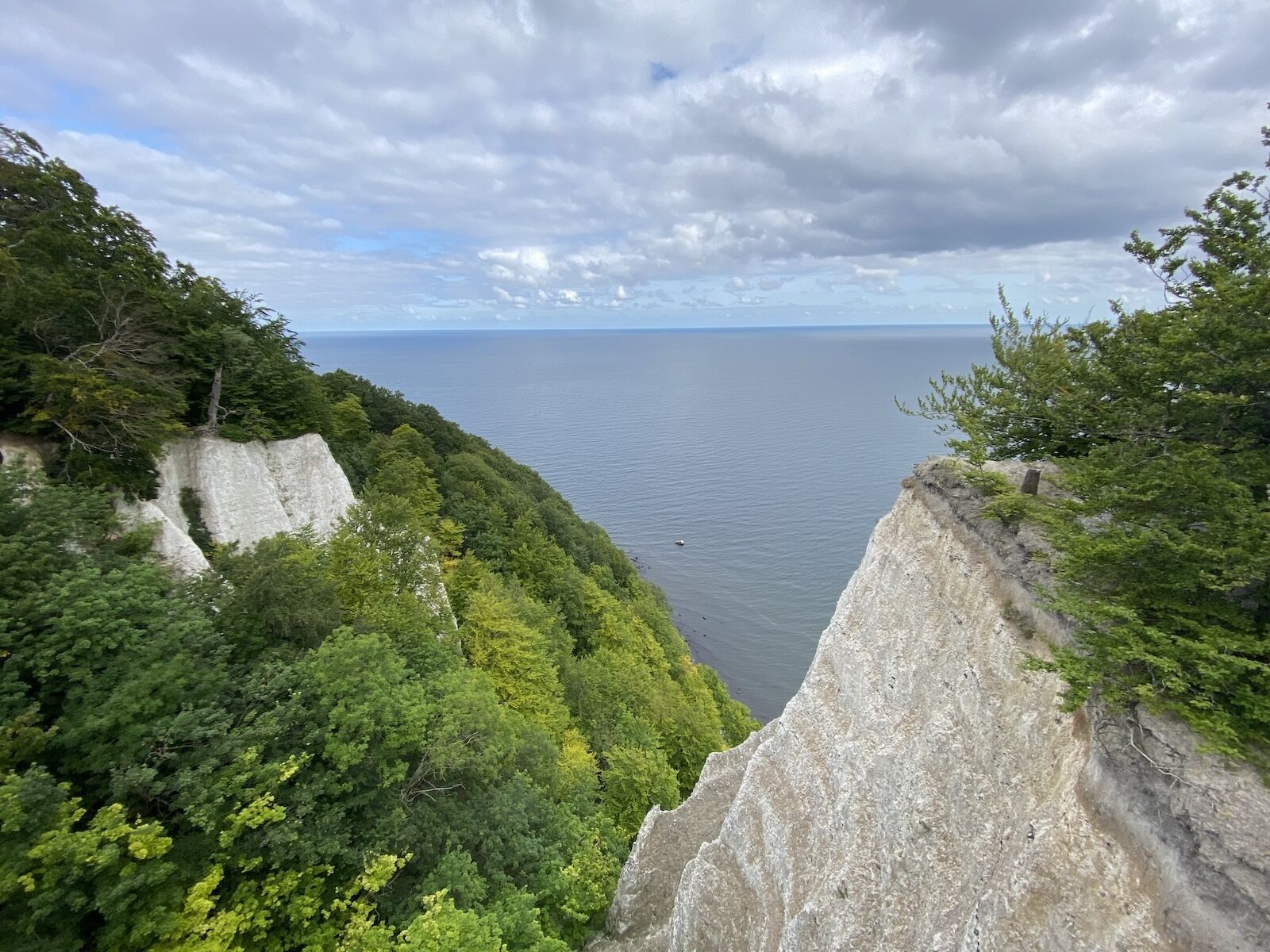
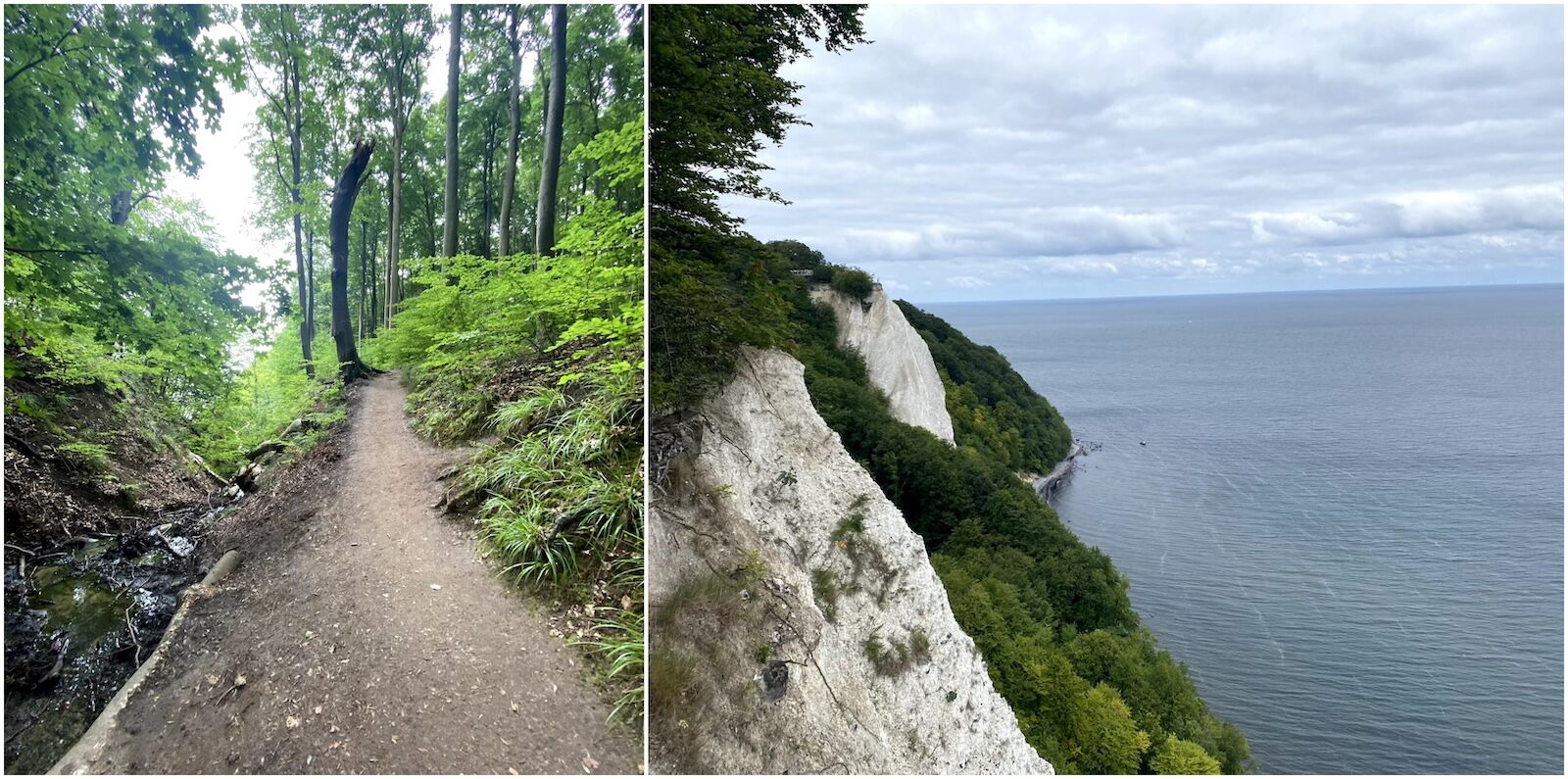

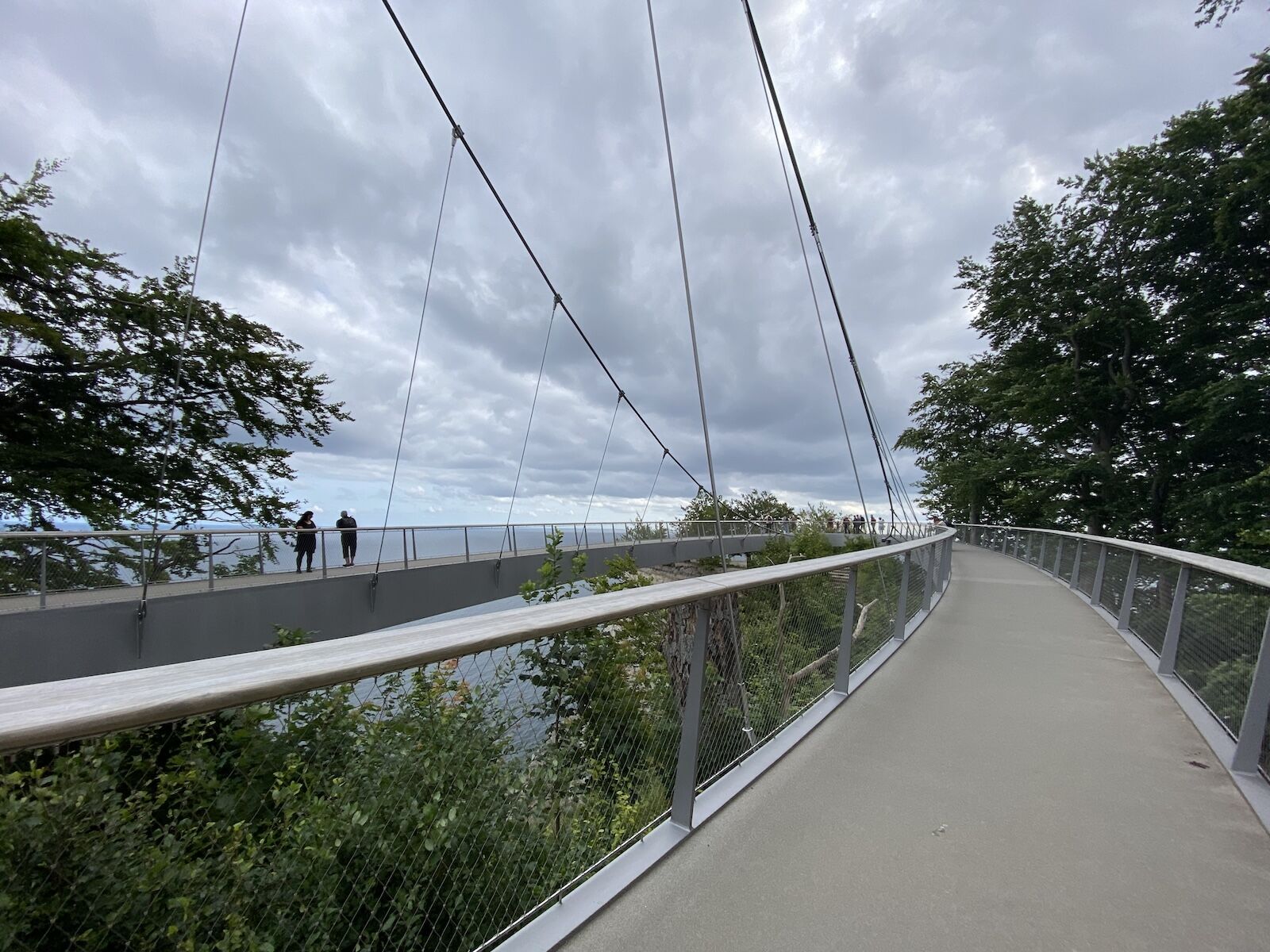
Rügen is home to Jasmund National Park, the smallest national park in Germany, but one that you should absolutely make time for. Jasmund National Park is most famous for its impressive chalk cliffs that have inspired artists for centuries (including the aforementioned Romantic painter Caspar David Friedrich), as well as for its UNESCO-listed beech forest. If you are able-bodied and want to be totally immersed in the park, take a hike right through it. The well-marked trail starts in the town of Sassnitz, which can be reached from Binz by bus, and ends at the Königsstuhl National Park Center five miles later. Along the way, the views of the chalk cliffs and the Baltic Sea are phenomenal, and you can even stop at the UNESCO World Heritage Forum along the way. Once closer to your final destination, take a photo break at the popular Victoria-Sicht viewpoint for a picture and then head to the Königsstuhl National Park Center where there’s a cafe, an exhibition about the park, and, most importantly, the Skywalk, a structure that allows for amazing views of the site. Leaving early in the morning is preferable if you want to enjoy a crowd-free trail and Skywalk. Also, you can hike your way there and make good use of the frequent buses that arrive and stop at Königsstuhl National Park Center for the way back, or vice versa.
Spend a day in beautiful Kap Akrona in Putgarten
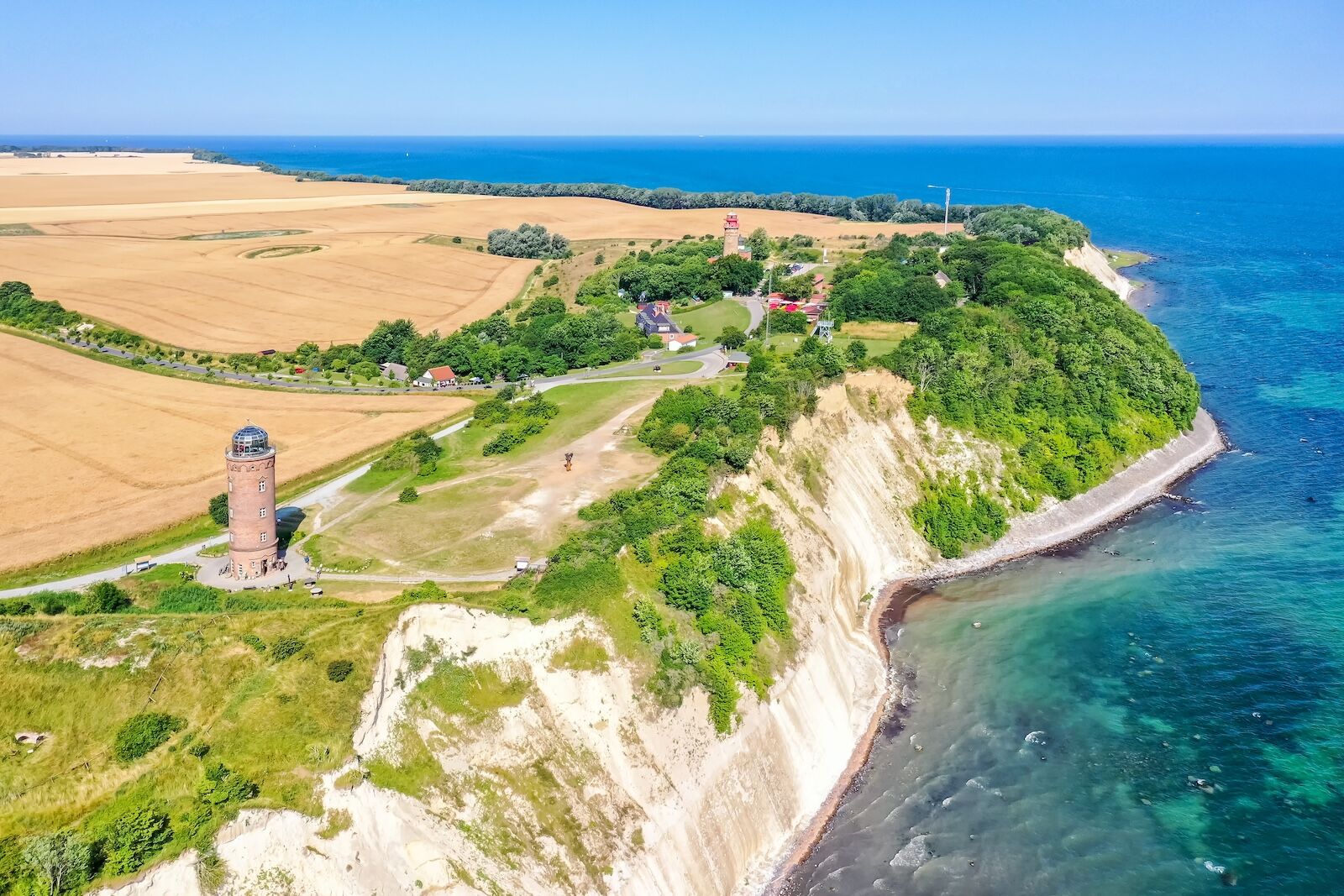
Photo: Markus Mainka /Shutterstock
Because Kap Akrona is the northernmost point, and the most remote part of Rügen, it takes a little bit of preparation to get there by bus, which are significantly less frequent in this area. That’s why you should dedicate a full day to touring Kap Akrona and leave early in the morning to make the most of it. Walk on top of the 147-foot-tall cliff and enjoy the stunning views before taking a peek at the wall of the Slavic Castle. Check out the lighthouses, which can be visited and offer wonderful views, and tour the fisherman’s village of Vitt. While a bit commercial and crowded in the summer, the area is still very much a must-see while on Rügen.
Where to stay on the island of Rügen, Germany?

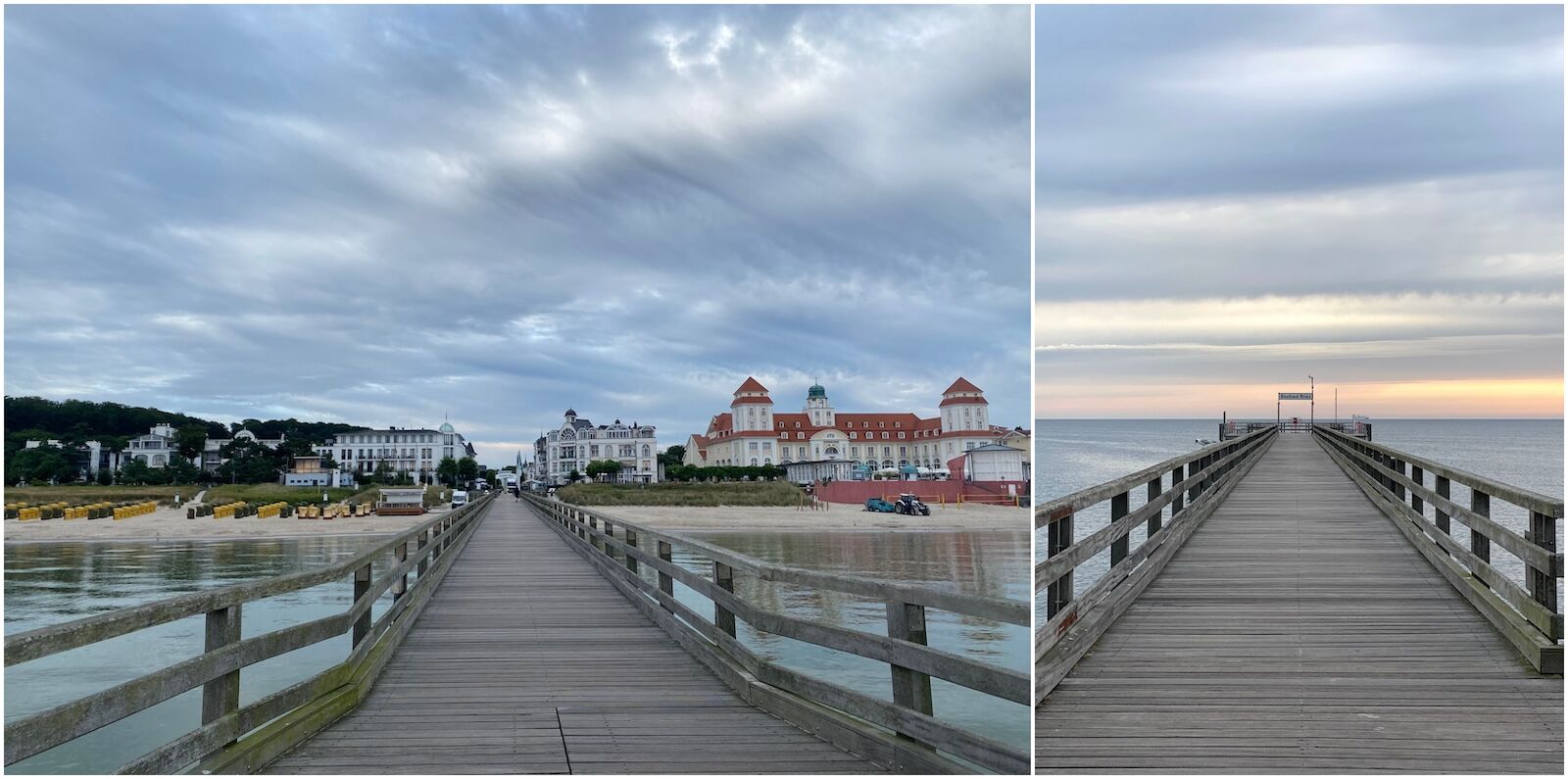
While there’s a slew of accommodations available on Rügen, the sophisticated Travel Charme Kurhaus Binz hotel is the most spectacular and the best located option. Situated right in the center of the town of Binz, this hotel faces the Baltic Sea, the beach, the promenade, and the pier. You can walk straight out of the Travel Charme Kurhaus Binz hotel and find yourself on the sand in less than one minute. Take advantage of the location by going for swims, long walks on the promenade, and by making regular trips to the two nearby bakeries: Peters and Junge Die Bäckerei for German pastries.
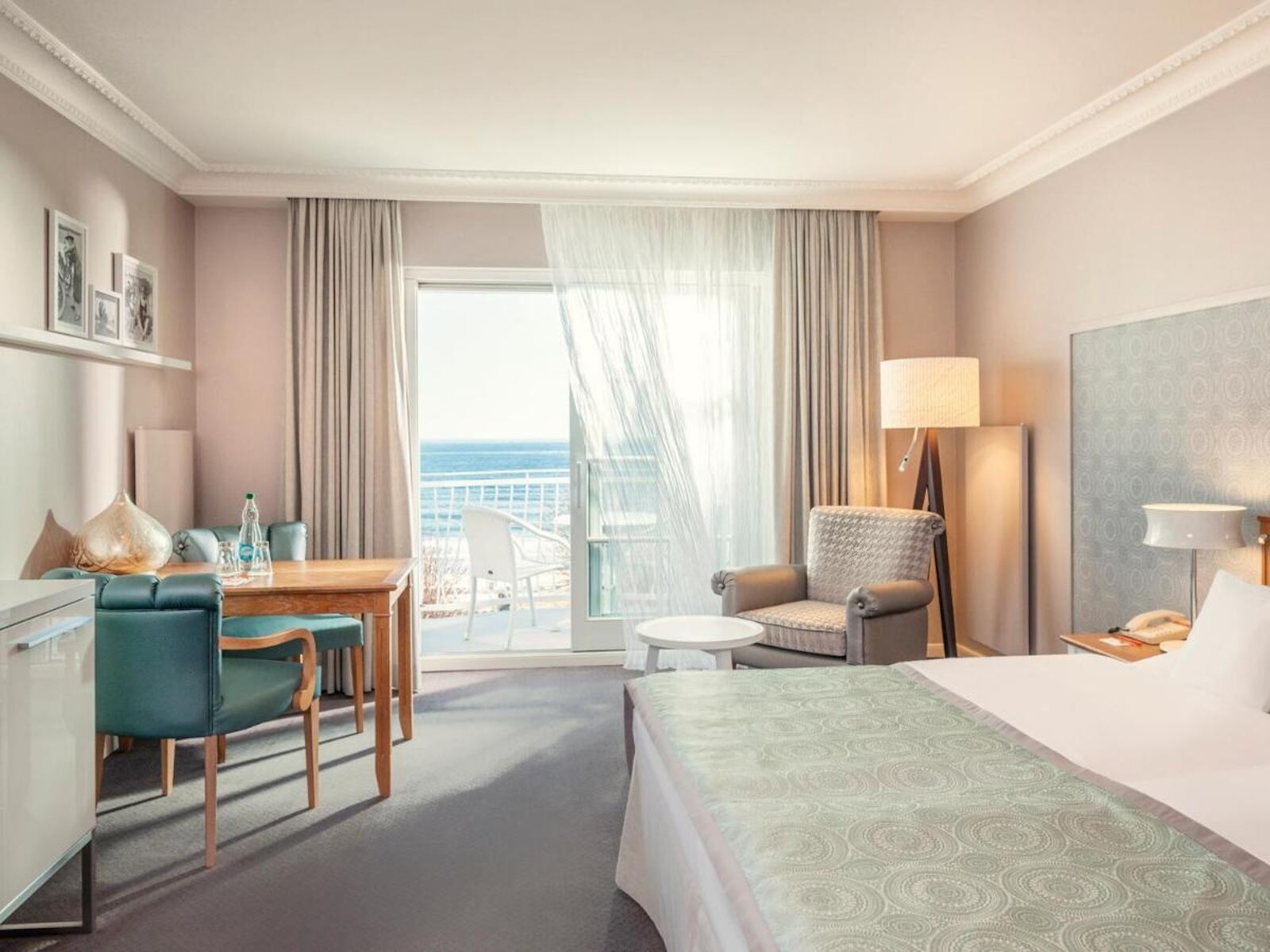
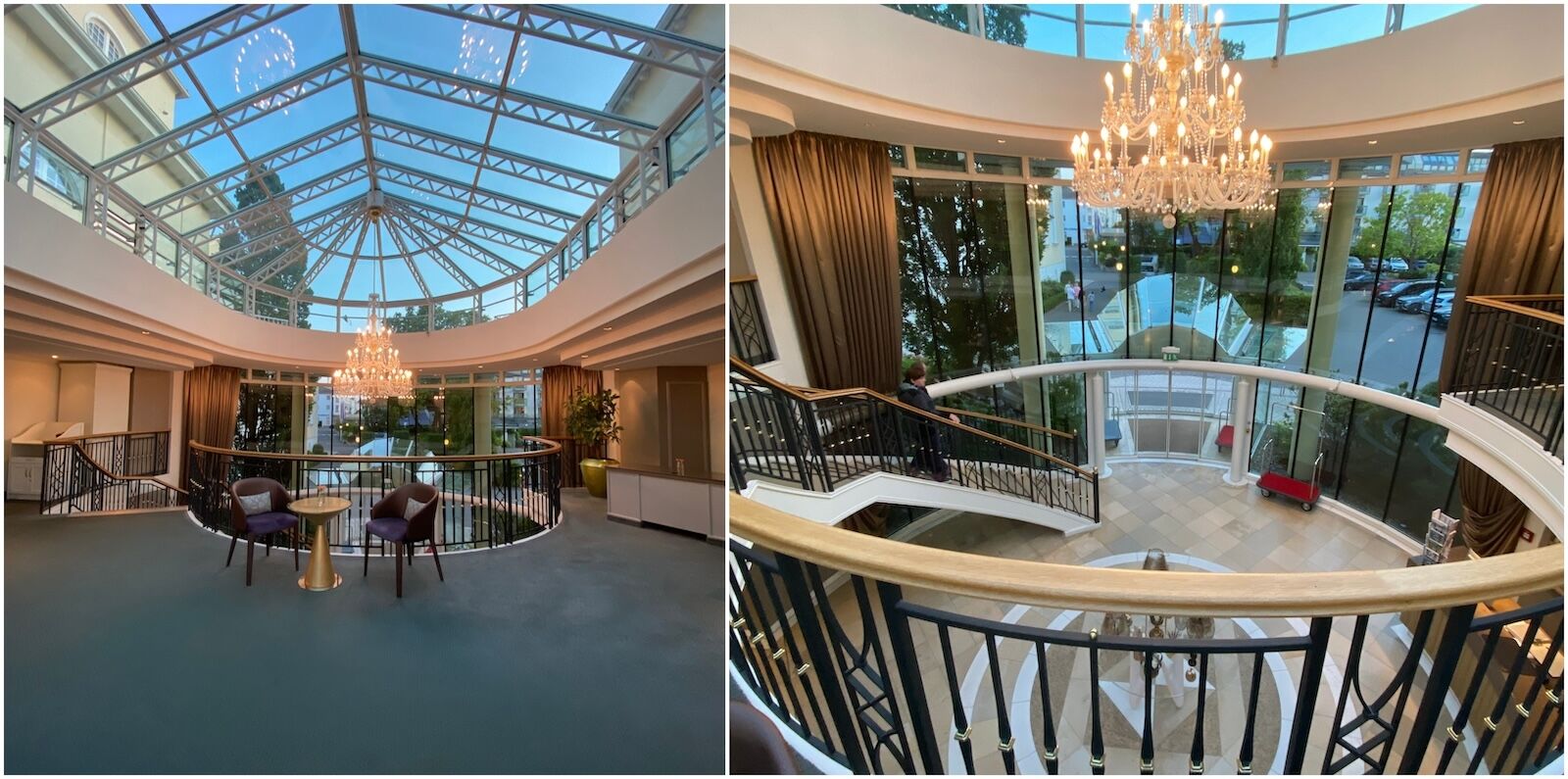

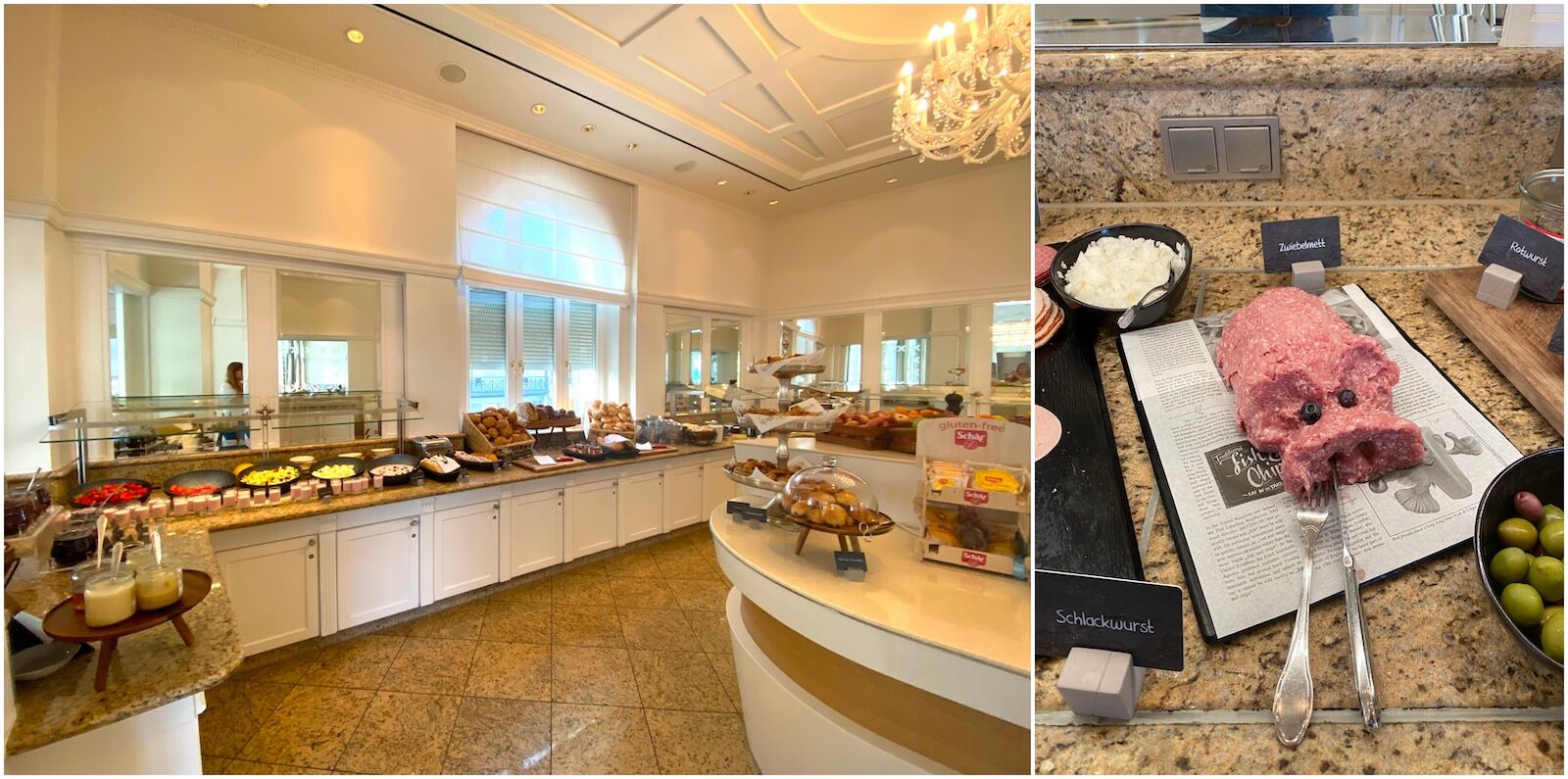
While the location is certainly ideal, the Travel Charme Kurhaus Binz hotel has a lot more to show off than its address. The lobby is an impressive glass house decorated with chandeliers that is sure to dazzle any unsuspecting travelers, and while the guest rooms offer a lot less bling, they are large, extremely comfortable, and provide great views. There are two pools on site, one indoor and one outdoor, both of which are heated and connected. The hotel is also home to a jacuzzi, several saunas, and a spa where guests can book various treatments. There are a few food and drinks options within the hotel, and while I can’t vouch for them personally, if they are anything like the plentiful and delicious buffet breakfast served every morning, you won’t be disappointed.
The Travel Charme Kurhaus Binz hotel offers a free shuttle service to and from the train station, allowing those who opt out of driving to make it to their beautiful accommodation without fuss.